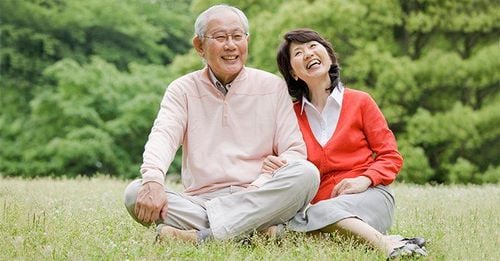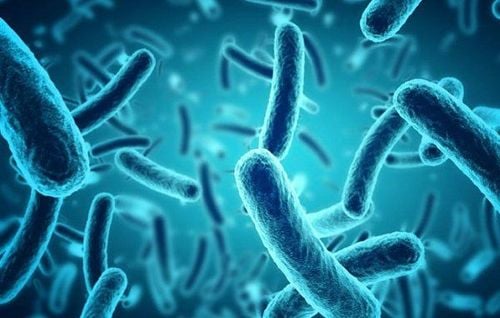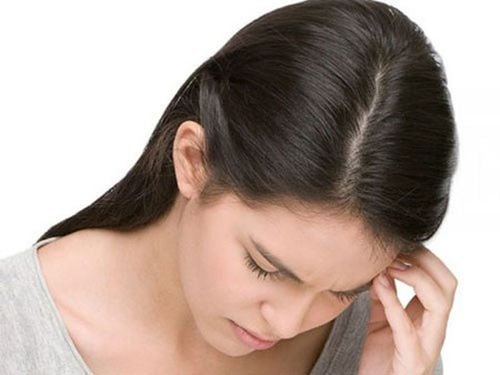This is an automatically translated article.
Many people after middle age often feel happier, less stressed and feel better about themselves. So why are older people happier than younger people?
1. Happiness in middle age
People are happier, less stressed and feel better about themselves after age 50. A telephone survey of more than 340,000 people found that overall happiness improves as people pass middle age.
Emotions such as anger, anxiety, stress and sadness vary with age and are the same in both men and women, although women are more likely to be anxious, stressed, and sad.
Negative emotions like stress and anger subside after the early 20s, and people over 50 have less anxiety than younger people. According to the survey:
About 35% of people said they worry a lot by the age of 50. Feelings of well-being can improve when children are less likely to leave the house because of reduced family conflicts and less anxiety. People worry less about money and health care costs as they age. Women have a higher overall happiness index than men, but not in terms of happiness or a measure of life enjoyment. So why are older people happier and less stressed than younger people?
There are several theories that explain people feel better with age that are not related to lifestyle factors because it is that experience, knowledge and feelings also increase with age. Older people are less likely to recall negative memories than younger people. This makes it easier to control emotions and therefore happier.
In addition, older people can focus less on what they have or have not achieved, and more on how to make the most of the rest of their lives. The study results were based on telephone interviews of 18-85 year olds, of which 48% were men with an average age of 47.3.
2. What is middle age?
There are many studies that say: "People aged 40 - 59 years old - middle age are generally the least satisfied and feel unhappiness most markedly among people aged 50 - 54 years old" .
A study found that people between the ages of 40 and 50 were the least happy and the most anxious. Research by the Institute for National Statistics (ONS) shows that the pressure of caring for children and aging parents can have a big impact on this age group.
According to the latest official Happiness statistics, middle-aged people are the least happy, have the lowest life satisfaction and highest anxiety.
Even people over 90 years old report higher life satisfaction and happiness than 40-59 year olds. While women in general experience higher levels of anxiety than men, they are more satisfied with life and feel happier than men.
Statisticians who analyzed the personal happiness data of more than 300,000 UK adults over 3 years found that happiness and life satisfaction plummeted in respondents aged 35 and over. However, the trend reverses when respondents are in their 60s, with the 65-79 year olds tending to have the highest average personal happiness levels.

Hạnh phúc tuổi trung niên có thể là ít nhất so với các lứa tuổi khác
People in middle age can be under double pressure when it comes to caring for children and aging parents at the same time. Younger respondents, many of whom are still in school, and older, retired people may have more time for leisure activities. Meanwhile, middle-aged people require more time and have difficulty in balancing work and family care.
As society develops, people get married later and have children later. It is also the reason that happiness levels are lower for the middle-aged group, possibly due to the burden of taking care of parents and children at the same time.
One researcher said: “Every age has to face challenges in different stages of life, but things are especially difficult for middle aged people. They may have to shoulder the responsibility of taking care of parents and children at the same time, or deal with family disturbances such as birth and death separation or divorce.”
It is also a period in life where there is a lot of work and financial pressure. Expect to reach the top of your career while also dealing with a volatile job market.
3. Which age is the happiest?
A survey asked people to rate their life satisfaction, the degree to which they felt what they did was worthwhile, happiness, and anxiety. The results showed that people aged 40-59 were generally the least satisfied across age groups, with the lowest levels in the 50-54 age group. Life satisfaction is highest at the age of 70-74, followed by 65-69 years old and 16-19 years old. People between the ages of 75 and 79 also have high levels of life satisfaction, although this declines with age.
Happiness also follows a similar pattern, people surveyed aged 40-59 have low levels of happiness and 50-54 years old is the least happy age. People aged 65-74 are the happiest, and 16-19 also have high levels of happiness. Over the age of 75, happiness levels drop, but even over the age of 90 is happier than in middle age.
Mental health problems such as anxiety, depression have a great impact on life, even hindering the ability to work. It's important to seek help as soon as possible if you feel anxiety is interfering with your ability to do normal things. See your doctor or talk to a family member or friend so you don't deal with it alone and get help and support.
A study shows that life seems a little brighter after the age of 50. Older adults in their mid to late 50s are generally happier and less stressed and anxious than younger adults in their 20s, researchers say.

Tuổi nào hạnh phúc nhất có thể kể đến độ tuổi 65 – 74
4. Two ways of looking at life
Current research includes measures of both overall happiness (called global happiness) and daily experiences of specific feelings like stress and happiness (called hedonistic happiness) ).
These two measures of happiness are rarely included in the same study. But both are important, as universal happiness provides a more reflective view of life, while hedonistic happiness offers a more immediate look.
Happiness, enjoyment, stress, anxiety, anger and sadness - they all change with age, but they show very different patterns. For example, stress and anger decrease steadily from youth to old age. But the anxiety persisted until the age of 50 and then subsided. Sadness increases slightly in the early 40s and decreases in the mid-50s, but overall sadness does not change much with age.
And people's overall satisfaction with their lives shows a U-shaped pattern that declines until about age 50 before trending up again in the following years.
Men and women show very similar patterns in the degree of happiness change with age, although women tend to have higher levels of stress, anxiety and sadness. However, women have the same level of happiness as men and tend to feel better about their lives overall, especially during the first 50 years.
Please dial HOTLINE for more information or register for an appointment HERE. Download MyVinmec app to make appointments faster and to manage your bookings easily.













